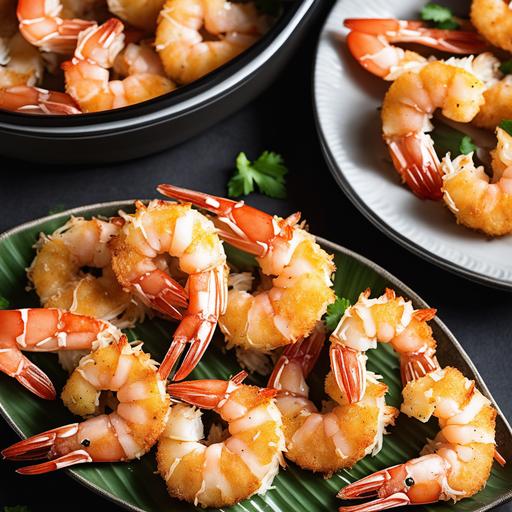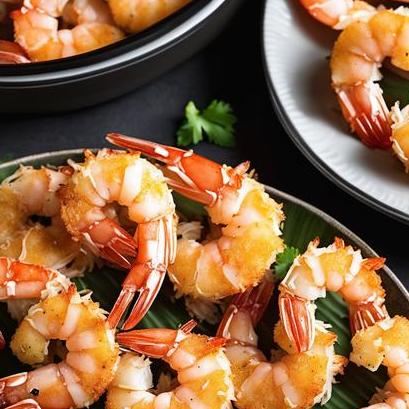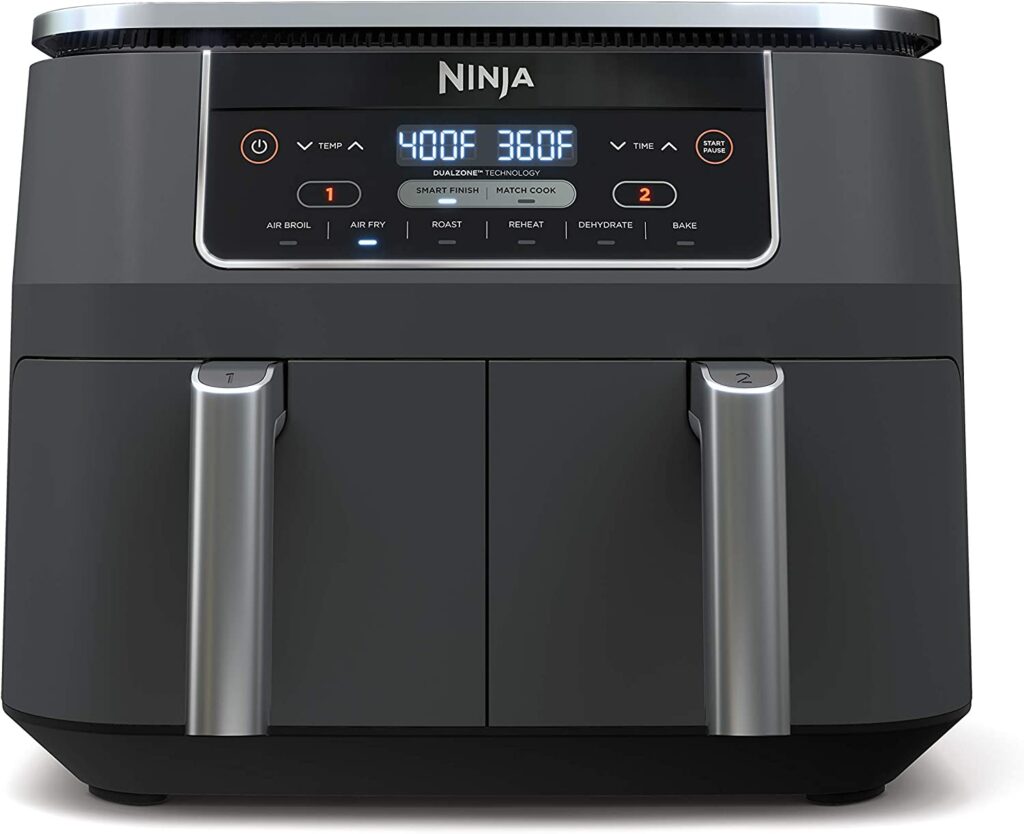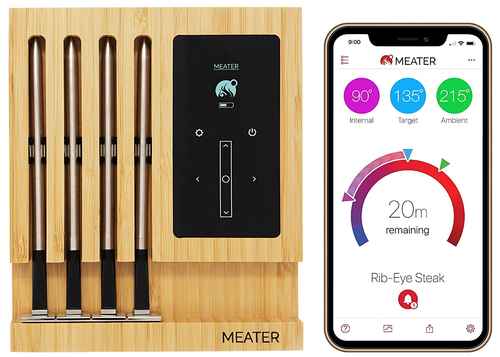Coconut Shrimp Air Fryer Recipe: Crunchy, Flavorful, And Healthy Delights!

In the world of culinary delights, few dishes perfectly blend the tropical taste of coconut with succulent shrimp like the beloved Coconut Shrimp. And if you’re looking for a healthier twist, the air fryer becomes your best ally! This comprehensive and in-depth article will guide you through the science, culinary details, selection, cleaning, preparation, tips, variations, doneness checks, and the tantalizing recipe for coconut shrimp using an air fryer. Get ready to embark on a culinary adventure!
Food Science: The Magic Behind Coconut Shrimp
Coconut shrimp combines the delightful flavors of fresh seafood with the tropical punch of coconut. The unique combination of proteins, fats, and carbohydrates creates a truly satisfying and memorable dish. Let’s dive into some key food science principles that make this recipe a standout.
1. Shrimp: The Star of the Show
Shrimp, the primary ingredient of this dish, offers a variety of benefits. Rich in protein, shrimp helps build and maintain muscles and provides essential amino acids. It also contains omega-3 fatty acids, which promote heart health and reduce inflammation.
2. Coconut: The Tropical Twist
Coconut adds a luscious texture and a delicious flavor to the shrimp. Its high-fat content brings a unique taste and aroma. Moreover, coconut has medium-chain triglycerides (MCTs), which are metabolized differently than other fats, providing an efficient energy source.
3. Air Fryer: A Healthy Cooking Alternative
Using an air fryer offers a healthier alternative to deep-frying. The appliance uses hot air circulation to cook food, requiring little to no oil. This results in a significantly reduced fat content while maintaining a satisfying crunch.
Culinary Details: Selecting the Perfect Ingredients
To create the perfect coconut shrimp, it is essential to start with fresh and high-quality ingredients. Paying attention to each component will elevate the flavors and textures, ultimately enhancing your culinary experience. Here’s what to consider when selecting your ingredients.
1. Shrimp Selection
Opt for fresh, wild-caught shrimp when possible. The size of the shrimp will influence the cooking time and overall presentation. Large shrimp, such as jumbo or colossal, are perfect for coconut shrimp as they provide a juicy and substantial bite.
2. Coconut: Fresh or Desiccated?
When it comes to coconut, you have two primary options: fresh or desiccated. Freshly grated coconut offers an unmatched aroma and texture. However, desiccated coconut is more accessible and retains a good flavor. Choose unsweetened varieties to maintain control over the sweetness in your dish.
3. Panko for Perfect Crunch
Panko, a type of Japanese breadcrumb, is the secret ingredient for achieving the ultimate crunch in your coconut shrimp. Its coarse texture adds a delightful contrast to the tender shrimp and creates an enticing golden-brown crust.
Cleaning and Preparing Shrimp: The Key Steps

Before diving into the preparation process, it’s crucial to clean and prepare the shrimp properly. Taking care of this step ensures the best possible flavor and ensures any unwanted elements are removed. Follow these steps to clean and prepare your shrimp thoroughly.
1. Defrosting Frozen Shrimp
If you’re working with frozen shrimp, allow them to defrost gradually. Place them in a bowl in the refrigerator overnight. This slow defrosting prevents texture degradation and helps retain the natural juices.
2. Removing Shells and Veins
Once the shrimp are fully defrosted, it’s time to remove the shells and veins. Begin by holding the shrimp firmly and gently pulling off the shell. Next, make a shallow cut along the back of the shrimp to expose the vein. Use the tip of a paring knife or a shrimp deveiner to lift and remove the dark vein.
3. Rinse and Pat Dry
Give the cleaned shrimp a quick rinse under cold water to remove any remaining traces of the vein or shell fragments. Thoroughly pat them dry using paper towels to remove excess moisture. Dry shrimp will ensure a better adherence of the breading mixture.
Breading Techniques: Tips for a Perfect Coat
Breading your shrimp properly is essential for achieving a crispy, flavorful, and evenly cooked coconut shrimp. The combination of flour, eggs, and panko provides a robust coating that enhances both the taste and texture of your dish. Follow these tips to achieve a perfect coat every time.
1. Flour: The First Layer
Start with a light dusting of all-purpose flour which helps dry the shrimp’s surface, creating an optimal base for the egg wash. This step further promotes the adhesion of the panko breadcrumbs and coconut to the shrimp.
2. Egg Wash: Binding Agent
Whisk together eggs and a splash of water or milk to create the egg wash. The proteins in the eggs act as a binder, ensuring the breadcrumbs and coconut adhere to the shrimp. Dip each flour-coated shrimp into the egg wash, allowing any excess to drip off.
3. Panko and Coconut Mixture: The Final Crunch
Once the shrimp is dipped in the egg wash, it’s time to coat it with the panko and coconut mixture. Combine equal parts panko breadcrumbs and desiccated coconut in a shallow dish. Mix well to evenly distribute the flavors. Roll each shrimp in the mixture, gently pressing it to ensure an even coat.
Cooking with the Air Fryer: Tips for Perfect Results
Now that you have perfectly breaded shrimp, it’s time to introduce them to the air fryer! Follow these tips for cooking your coconut shrimp to golden perfection while optimizing the air fryer’s capabilities.
1. Preheating the Air Fryer
Ensure your air fryer is preheated before adding the shrimp. This allows for even cooking and helps achieve that enticing crunch. Preheat the air fryer to 400°F (200°C) for about 5 minutes.
2. Greasing the Air Fryer Basket
While the air fryer promotes healthier cooking with minimal oil, greasing the basket with a light coating of cooking spray prevents the breading from sticking and ensures easy removal once cooked.
3. Cooking Time and Temperature
Place the breaded shrimp in a single layer inside the preheated air fryer basket. Cook the shrimp at 400°F (200°C) for approximately 8-10 minutes, flipping them halfway through for even browning. Depending on the size of the shrimp, the cooking time may vary. Always check for doneness to ensure perfectly cooked shrimp.
Checking for Doneness: Ensuring Perfectly Cooked Shrimp

Achieving the ideal level of doneness is crucial to enjoying the flavors and textures of coconut shrimp. Overcooking can result in tough, dry shrimp, while undercooking can lead to a potentially unsafe dish. Follow these guidelines to check for doneness and ensure your shrimp are cooked to perfection.
1. Color and Texture
Properly cooked coconut shrimp should have a crispy golden-brown coating with a tender and juicy interior. Keep an eye on the color and texture during cooking, as they are reliable indicators of doneness.
2. Internal Temperature
Using an instant-read meat thermometer, insert the probe into the thickest part of a shrimp, without touching the pan or basket. The internal temperature should reach 145°F (63°C) for perfectly done shrimp. Be sure to measure multiple shrimp to account for any variations in size.
3. Taste Test
Ultimately, the best way to check for doneness is by tasting a shrimp. A perfectly cooked coconut shrimp will have a delicate, succulent texture and an explosion of flavors that blend harmoniously with the coconut and spices.
Recipe: Coconut Shrimp Air Fryer Delight
Now that you are well-versed in the culinary nuances of coconut shrimp, it’s time to put your knowledge into action. Below is an enticing recipe for coconut shrimp using an air fryer. Prepare to savor this delicious dish, impressing your family and friends with your newfound culinary skills!
Ingredients:
- 1 lb (450g) large shrimp, peeled and deveined
- 1 cup all-purpose flour
- 2 large eggs
- 1 cup panko breadcrumbs
- 1 cup desiccated coconut (unsweetened)
- 1 tsp paprika
- 1/2 tsp salt
- 1/4 tsp black pepper
Directions:
- Preheat the air fryer to 400°F (200°C) for 5 minutes.
- In three separate shallow dishes, place the flour (seasoned with salt and pepper), beaten eggs, and a mixture of panko breadcrumbs, desiccated coconut, and paprika.
- Dredge each shrimp in flour, shaking off any excess.
- Dip the flour-coated shrimp into the beaten eggs, allowing any excess to drip off.
- Roll the shrimp in the panko and coconut mixture, pressing gently to coat evenly.
- Lightly grease the air fryer basket with cooking spray.
- Place the breaded shrimp in a single layer inside the preheated air fryer basket.
- Cook at 400°F (200°C) for 8-10 minutes, flipping the shrimp halfway through, until golden brown and crispy.
- Once cooked, transfer the coconut shrimp to a serving platter and garnish with fresh cilantro or a squeeze of lime for an extra burst of flavor.
- Serve hot with your favorite dipping sauces, such as sweet chili sauce or a zesty pineapple salsa.
Variations: Exploring Flavorful Twists
While the classic coconut shrimp recipe is already a crowd-pleaser, don’t be afraid to experiment and add your personal touch. Here are a few variations to consider, allowing you to explore different flavors and cater to individual preferences.
1. Spicy Kick
For those who pique their taste buds with a spicy kick, add a dash of cayenne pepper to the flour or include a pinch of chili flakes in the panko and coconut mixture. The subtle heat will take your coconut shrimp to a whole new level.
2. Citrus Delight
Infuse your coconut shrimp with a burst of citrus by incorporating grated lime or orange zest into the panko and coconut mixture. The refreshing yet tangy notes will elevate the overall flavor profile and add a zesty twist.
3. Sweet Twist
If you have a sweet tooth, swap the traditional dipping sauces for a contrasting taste profile. Try serving your coconut shrimp with a pineapple teriyaki sauce or a honey and mustard dip. The combination of sweet and savory will surely impress!
Conclusion
Coconut shrimp cooked in an air fryer is a delectable delight worth savoring. By understanding the food science, considering culinary details, selecting quality ingredients, mastering the cleaning and preparation steps, and utilizing essential tips for cooking, doneness, and breading, you are now equipped to create the perfect coconut shrimp dish. With the tantalizing recipe and variations provided, it’s time to let your creativity shine and indulge in this crunchy, flavorful, and healthy tropical treat. Get ready to mesmerize your taste buds and those around you with this air fryer coconut shrimp masterpiece!
Sources
FAQS On Coconut Shrimp Air Fryer Recipe
What Ingredients Do I Need For Coconut Shrimp In The Air Fryer Recipe?
To make coconut shrimp in the air fryer, you will need the following ingredients:
- 1 pound of large shrimp, peeled and deveined
- 1 cup of shredded coconut
- 1/2 cup of panko breadcrumbs
- 2 eggs, beaten
- 1/2 cup of all-purpose flour
- 1/2 teaspoon of salt
- 1/4 teaspoon of black pepper
- Cooking spray
Can I Use Frozen Shrimp For This Recipe?
Yes, you can use frozen shrimp for this recipe. However, make sure to properly thaw the shrimp before using them. Simply place the frozen shrimp in a bowl of cold water for about 15-20 minutes or follow the package instructions for thawing.
How Do I Prepare The Shrimp Before Coating Them?
Before coating the shrimp, you need to make sure they are properly prepared. Start by peeling and deveining the shrimp. Then, rinse them under cold water and pat them dry using a paper towel. This will ensure that the coating sticks well to the shrimp.
Can I Use Sweetened Coconut Flakes Instead Of Unsweetened Shredded Coconut?
While it is possible to use sweetened coconut flakes in this recipe, it may result in a sweeter final dish. If you prefer a subtle coconut flavor, it is recommended to use unsweetened shredded coconut. However, you can adjust the sweetness according to your taste preference.
How Should I Store Any Leftovers?
If you have any leftovers, it is best to store them in an airtight container in the refrigerator. They will last for up to 2-3 days. To reheat, you can place them in the air fryer for a few minutes to maintain their crispy texture.
Can I Make This Recipe Gluten-free?
Yes, you can make this recipe gluten-free by using gluten-free panko breadcrumbs and a gluten-free all-purpose flour substitute. Make sure to check the labels of the products to ensure they are certified gluten-free.
What Dipping Sauce Pairs Well With Coconut Shrimp?
Coconut shrimp pairs well with various dipping sauces. Some popular options include sweet chili sauce, mango salsa, tangy tamarind sauce, or a creamy garlic aioli. Feel free to experiment with different sauces to find your favorite combination.


